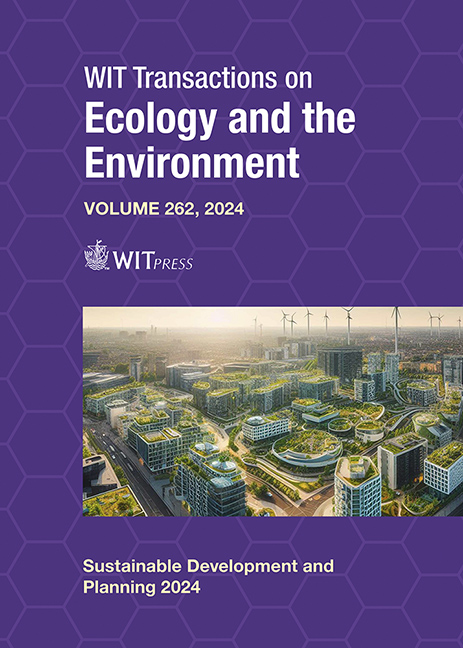UPSCALING OF AIR AND CLIMATE PLANNING IN A MULTI-LEVEL GOVERNANCE PERSPECTIVE: INSIGHTS FROM TUSCANY, ITALY
Price
Free (open access)
Transaction
Volume
262
Pages
12
Page Range
919 - 930
Published
2024
Paper DOI
10.2495/SDP240761
Copyright
Author(s)
ANGELA PILOGALLO, MONICA SALVIA, FILOMENA PIETRAPERTOSA, LUIGI SANTOPIETRO
Abstract
Scientific literature has shown that air quality and climate change are like two sides of the same coin. Greater integration of air–climate policies is increasingly seen as a priority on the European political agenda even though, from a regulatory point of view, they are still managed separately. The analysis of air and climate plans can reveal good practices that exploit the potential of a synergistic approach, showing a degree of integration beyond the regulatory framework. This study aims to analyse air–climate integration in a multi-level governance context and to highlight good practices in an upscaling perspective, oriented to broaden and sustain their replicability to achieve a wider impact. This requires supporting knowledge transfer between cities (horizontal upscaling). Furthermore, it is necessary to inform regional governments with the dual aim of acting on the factors that favour replicability of best practices (vertical upscaling) and to set binding standards for all municipalities (hierarchical upscaling). This work focuses on an Italian case study, the Tuscany region, which is particularly relevant due to its well-structured regulatory planning system for both climate and air quality components, with multiple and effective interactions between different levels of governance.
Keywords
air quality, climate mitigation, climate adaptation, planning, upscaling, multi-level, governance, sub-national governments, regions, Italy





